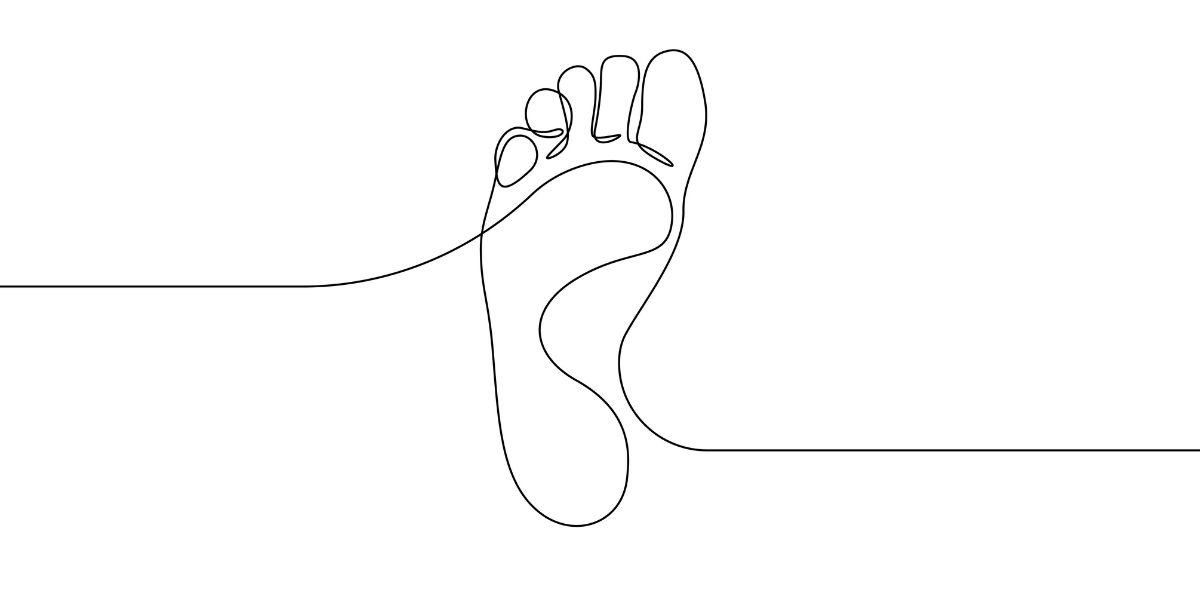The general rule for people with diabetes is to notify your doctor if you notice any change in feeling or appearance in your feet.
This page provides information on the range of symptoms that can indicate a wide variety of diabetic foot problems
Foot problems can quickly become serious so it’s important to check your feet daily for signs of damage or change in addition to attending foot examinations.
Signs of foot damage
- Wounds – cuts, burns, grazes or blisters
- Pain in the feet
- Prickly tingly feelings
- Burning sensation
- Warm or hot feet
- Cold feet
- Numbness
- Swelling
- Dry and cracked skin
- Firm spots on the feet
- Warts and fungus
- Changes in colour
- Changes in shape of the foot
- Changes in toenails
- Changes in smell
Wounds – cuts, burns, grazes or blisters
It’s important to take action on any wounds, such as cuts, burns, grazes or blisters. Make sure your feet are kept clea, cover the area of damage with a plaster that allows the area to breathe and ensure the area is not rubbed or made worse.
It’s important to let your doctor know at the earliest opportunity so he or she can advise on the best care advice for you.
Contact your doctor, out of hours service or NHS direct if you notice pus or any sign of infection in your feet
Pain
Pain may occur as a result of damage, such as a wound, blister or broken bone but can also occur for other reasons including neuropathic pain (nerve pain). In some cases, such as with nerve pain, the feeling of pain may be present despite no other outward changes.
A number of people with diabetes report intense pain when the skin on their feet or legs come into contact with material such as bed linen. A burning sensation, which can present difficulty when getting to sleep is also relatively common. These symptoms in people with diabetes tend to be dysesthesia, a type of neuropathic pain
It is important to tell your doctor if you experience pains in your feet.
Prickly, tingly feeling – unusual sensations in the feet
A tingly feeling like pins and needles could be a result of a number of causes. It can be from a temporary block in circulation, such as if you have been resting too much body weight on one part of your leg. However, it could be the result of neuropathy or advancing circulation problems if the sensation is regular and can’t otherwise be explained.
If you are experiencing these sensations for no good reason, speak to your doctor. You should also mention whether you have any other symptoms in your feet such as numbness in your feet, any changes of colour of your feet and if you experience any difficulty with the muscles in your feet or legs.
Burning sensation and very sensitive to touch
A number of people with diabetes report intense pain when the skin on their feet or legs come into contact with material such as bed linen. A burning sensation, which can present difficulty when getting to sleep is also relatively common.
These symptoms could be dysesthesia which can result from neuropathy, a common complication of diabetes caused by damage to the nerves.
Warm feet
Warm feet can result from a variety of causes, some of which may be harmless but it is important that those of us with diabetes not to ignore any symptoms.
Warmer than usual feet may be related to the temperature of your environment but could be a sign of complications or another condition, particularly if other symptoms are present.
If your feet, or just one foot, are feeling warm, check your feet for signs of any damage, swelling or changes in colour. If you cannot check your feet yourself, ask someone else to help you.
In some cases you may notice a swelling that is hot to the touch. This could be caused by a number of reasons and could include any of the following:
- Cellulitis – bacterial infection
- Gout
- A sprained ankle or broken bone in the foot
- Charcot foot
- Kidney disease
- Blisters or calluses
- Insect bites
If you experience warm feet either without good reason or if you have any other signs, it’s important to contact your doctor.
Cold feet
If you have feet that are cold to the touch that is not explained by the temperature of the environment, and is accompanied by a weak pulse, it could present a sign of circulation problems This is even more likely to be the case if you’ve noticed a loss of hair on your feet or toes.
Speak with your doctor if you experience cold feet for no good reason or if you notice any other changes in the appearance in your feet.
Numbness
If your feet are numb, and not just temporarily, it could be a sign of diabetic neuropathy which is nerve damage that can occur as a result of diabetes. If the damage affects our sensory nerves, this can cause a loss of feeling and our feet is the most likely part of the body to first be affected.
If you have lost sensation in your feet it’s very important to be aware of this and not risk damage to your feet that may occur without you feeling it. Notify your doctor if you noticed your feet have become numb for any extended length of time and make sure you check your feet every day for any signs of foot damages or changes.
Swelling
Swelling can occur for a number of reasons, with some of these being dangerous signs.
Causes of swelling in the feet include oedema (water retention), broken bones, sprains, gout and infection but there other possible causes too. If you notice your feet have swelled, it’s important to contact your doctor who will be able to assess the cause.
Dry or cracked skin
Dry skin is relatively common but a condition that shouldn’t be dismissed. People with diabetes are at increased risk of dry skin as a result of neuropathy as damaged nerves don’t deliver the signal that the feet need hydration.
If you develop dry skin, notify your doctor who can help your skin to be appropriately treated and therefore reduce the risk of complications developing which may include dermatitis or infection, which can be serious.
Firm spots on your feet
Areas of firm or raised areas of skin may be signs of corns, calluses or bunions. These may often be a sign of ill fitting footwear which could lead to other problems developing. The conditions can also raise the risk of foot damage and infection occurring.
Warts and fungus
Plantar warts (verrucas) and fungus need to be treated correctly to prevent an increased risk of foot infection. Fungal infection such as athlete’s foot can cause additional problems such as cracked skin and thick, hard to cut toenails which may lead to more serious complications.
If you develop warts or a fungal infection, speak to your doctor who can assess the problem and advise on treatment.
Changes in colour
Be aware of any unexpected changes of colour in your feet. Changes in the colour of your feet may be a sign that damage has, or is, taken place. Look out for changes of colour such as reddening, yellowing, paling or bluing of the skin, darkening of the skin, any areas that have become black or green coloured.
Changes in colour of your feet, including appearances of bruises, can sometimes indicate a serious medical issue so it’s important to notify your doctor if you notice any such changes.
Change of shape of your feet
Some conditions may cause a change of shape to your feet. Some causes include Charcot foot, a condition that is more common in people with diabetes and results from cracked, broken or dislocated bones in the foot or ankle.
Look out for any changes in your toes as well. If any of your toes start to point downwards or at another unusual angle, it could be a sign of a condition called hammer toes.
A change of shape in your feet can often indicate a potentially serious problem and therefore needs to be mentioned to your doctor.
Changes in toenails
Toenails may also indicate problems. Brittle or slow growing toenails could indicate peripheral arterial disease, thickening or a change in colour of toenails may indicate a fungal infection and in grown toenails can lead to more serious health issues.
When you check your feet, ensure you inspect your toenails as well and notify your doctor of any significant changes.
Changes in smell of your feet
Changes in smell of your feet may also be a sign of problems. If your feet start to develop a foul smell, it’s important to check for any other signs and to notify your doctor of the change in smell you’ve noticed so your doctor can assess further.




